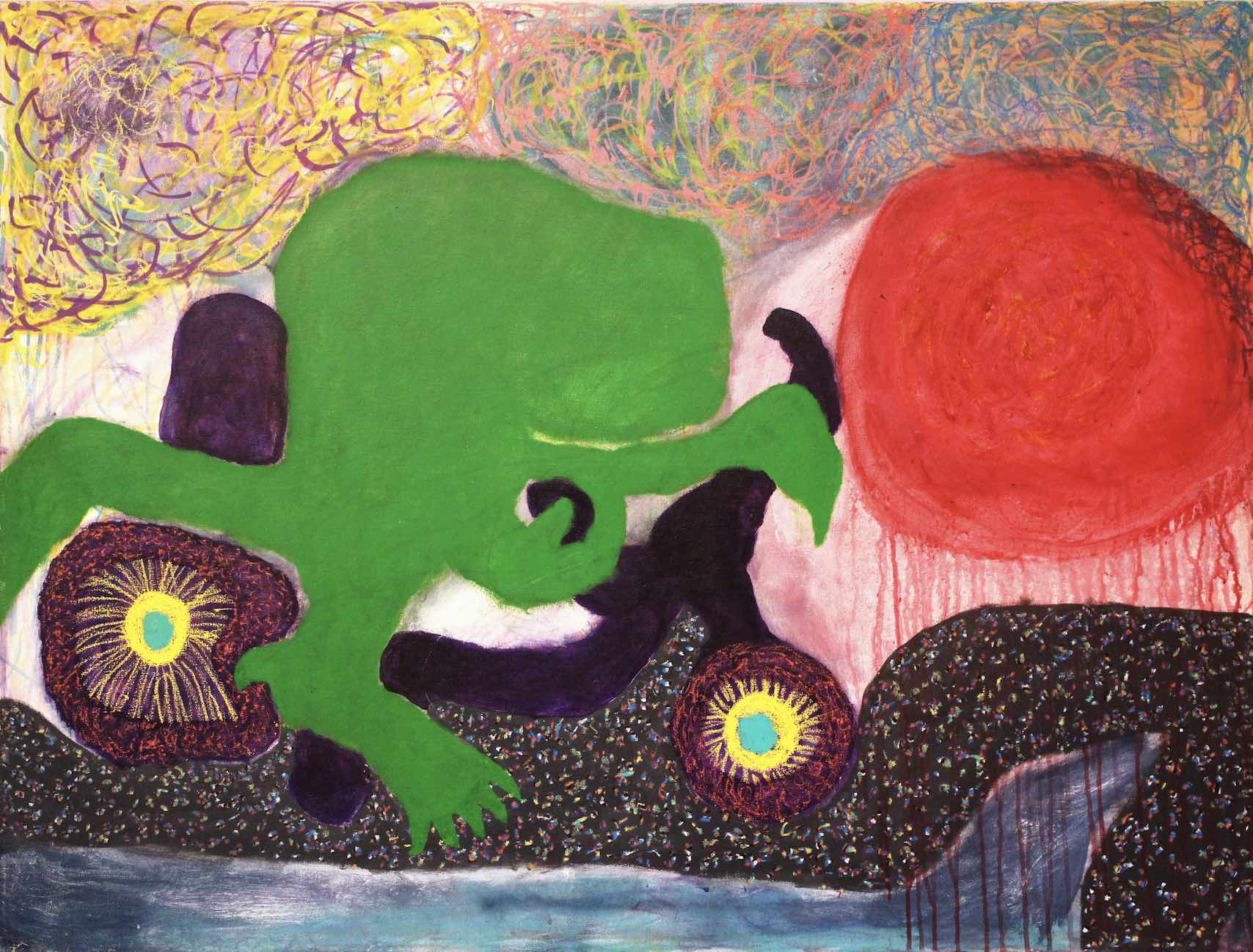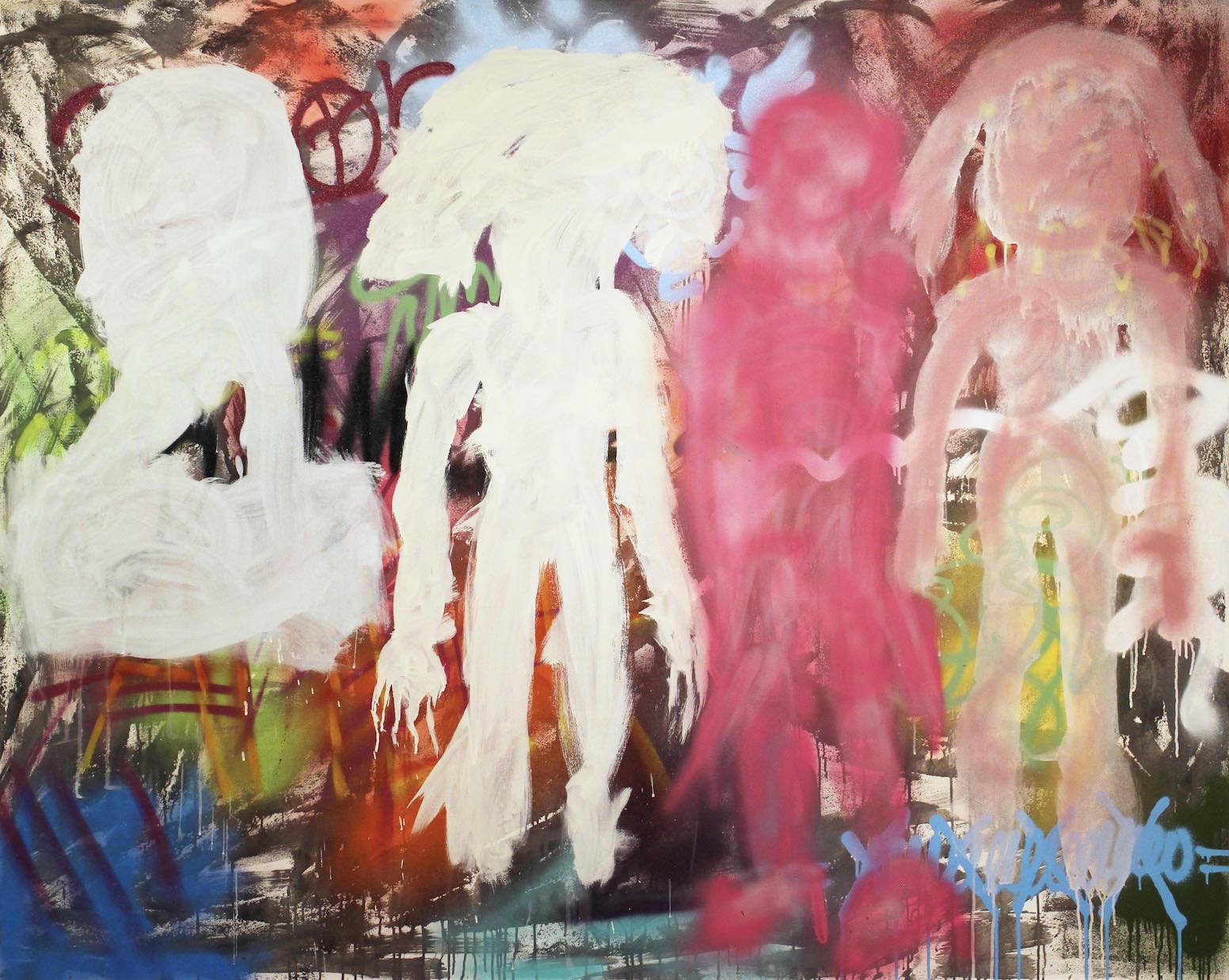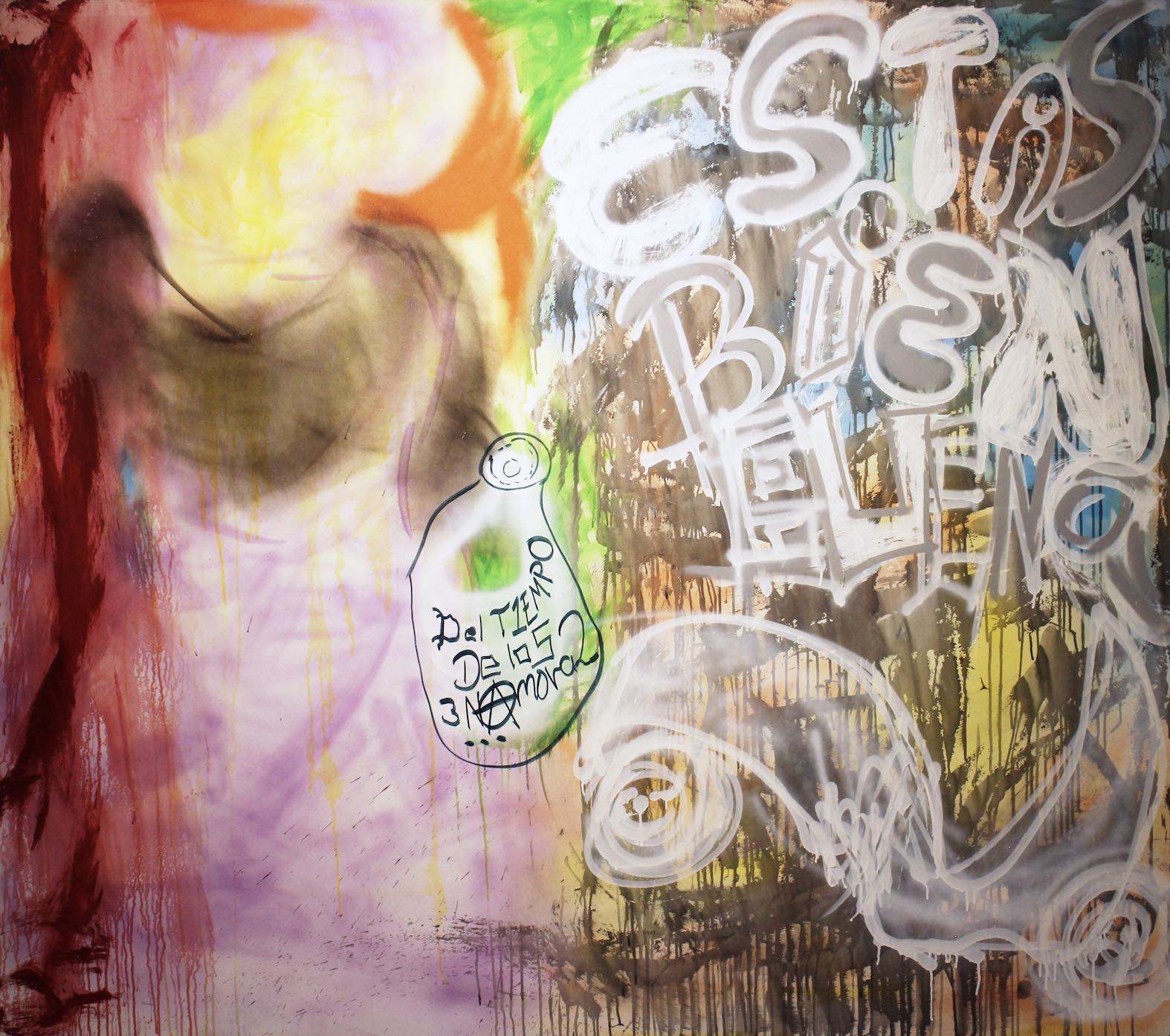
Review
Xuty: The Crocodile in Love
by Julián Madero
Galería José María Velasco
Reading time
7 min
Currently being presented at Galería José María Velasco is La cocodrila enamorada (The Female Crocodile in Love), a pictorial series carried out by Xuty (Bruno Nieto, Isla Mujeres, 1981) between 2012 and 2017, made up of 17 medium- and large-format paintings. The work, exhibited together for the first time, is a swan song to a period of falling in love: a love that is fruitful, intense, and likely fatal. The loss of individuality in the process of falling in love always marks a before and an after, whether of death or of metamorphosis. In the case of Xuty it does not seem like a coincidence that five years have passed in order for this series to come to light.
Let us ignore the obvious references to graffiti, art brut, and “neo-fauvism” made by Alfredo Matus in the gallery text, and let rather us try approaching the works themselves in order to know their particularities. How is the sensibility put on display here? With what resources is the imagination shared? What kind of testimony is cast out by a crocodile in love in the twenty-first century?
El amor no tiene tiempo, el amor no tiene edad (Love Has No Time, Love Has No Age), the work that opens the exhibition, is composed of lines made using purple, pink, blue, and fluorescent orange spray paints that together outline some feet and a torso, occupying the frame from one end to the other. What stands out is a green patch, reminiscent of digital painting, as well as some black brush strokes that imprint a notable tension—gestures that do not fit on a rectangular surface. A red square finished off with a crushed beer can attached to the canvas makes the final point. Even more than a quotation of the Rauschenbergian assembly, it seems that we are entering an amusement park.
Immediately afterward, we find a portrait of the female crocodile: Al amor de mis amores (To the Love of My Love), smiling with teeth and green eyes. Small squares make up her scales; a rectangle divided by a cross configures four triangular spaces in which we read “ja, ja, ja” (“ha, ha, ha”); a crying papaya; a heart with eyes that are holes; another happy heart. Tenderness and textures overlap, and we never find a space that hasn’t been impatiently traversed, littering the surface with indices, constellations, planets, and drifts.

In Vamos a dar una vuelta al cielo y a mi pantano (Let’s Go for a Ride to the Sky and to My Swamp) we can almost hear the croon of a child. A crocodile riding a bicycle, perhaps his first tricycle, is approaching the sun, going to cross a river: what might be a child from the Lacandon Jungle playing in his loneliness. Next to him is El hermoso bajo la lluvia morada (The Beautiful in the Purple Rain), in which a child dances next to some attached prints: “Boys don’t cry”––as the mandate says, Finn and Jake (those two characters who don’t kiss, but hold hands and dance) surround a kind of athlete whose chin or heart explodes. Or is it perhaps a necklace of prestige? He seems to jump to shoot the ball, crowned by a fluorescent star. Another work, Cocodrila atrapada en el planeta de las piñas, próxima apertura desayuno con la guapa (Female Crocodile Trapped in the Planet of Pineapples, Next Opening Breakfast with the Pretty One), displays a portrait with a constellation of planets embedded in the eyes, lips trembling.
The exhibition abounds in densely populated areas with diverse treatments: the disinterestedness of superimpositions. I find myself with the portrait of a black queen, Piña para el desayuno (Pineapple for Breakfast): in this narrative, daily life is full of unexpected matters. Who appears in the morning, still at mid-dawn, in the gloom? Is it death, a dinosaur of constellations, wild planets, the tangle, the confusion of awakening? Then, a painting of vibrant colors: La vida como una fiesta ¿bailamos? (Life as a Party, Shall We Dance?). There, surrounded by colorful planets, a pink dog and a green female crocodile hold hands and dance. The world seems like a happy place in this painting; there are two planets joined by a compass—is it the dance steps that bring us together?

We come face-to-face with another portrait: it is Cocodrila enamorada (Female Crocodile in Love) in a sequence dated: 2012, 2012, 2012, 2012, 2012… like a programming code. The female crocodile is in the foreground and center, smiling with raised arms, wacky eyes, and psychedelic skin. Next to her, there is another portrait that becomes a fragmented landscape: “CaRa de MOTA,” “LOKA”. The portrayed figure, with nervous hands and a gesture of concern, looks towards what was, or towards what is approaching.
I take some distance in order to be able to recognize the works all together. I identify shots that do not yield to the illusion of depth, as well as overwhelming tangencies, figures adjoining the backgrounds, landscapes subdivided into parcels, small galaxies and universes that open up in every corner, vaporous and ethereal colors—but also violent contrasts of hue and density. Textures of crayon, oil, and spray paint, into which are emptied positive and negative thoughts, smiles, tongues. Going back to being children crossed by fury, by the feeling of drowning, of falling like Icarus into the middle of the sea. Characters of crying breasts, cow woman, maternity woman, breastfeeding woman, “I hope one day to become time…," shrill spray paint... We read as sonorous traces the sentences “ADIÓS AMOR” (“GOODBYE LOVE”) “REALISMO DE MI TIME” (“REALISM OF MY TIME”), Soy lo que soy (verano) (“I am what I am (summer)”).

Three large-format paintings are presented further on, in a kind of coda of color and gesture. They make me think of all the time accumulated on the walls, the life superimposed on death, the sadness, the blood on the walls (the gesture of Ana Mendieta: “she got love”). Written phrases endow these daydreams with a specific character: “ESTÁS BIEN BUENA” (“YOU ARE GOOD GOOD”), “Del TIEMPO De los 3NAMORA2” (“Of the TIME of the LOV3R5”). These rooms inhabit characters who do not want to be humans or animals, adults who do not want to be children (“a being who is enjoying life,” says Xuty), colors that are ghosts. Cuatro fantásticos en peligro de extinción (Fantastic Four in Danger of Extinction), letters that are signs of peace, memories blurred like the reconstruction of drunkenness while hungover. Two shadows dance, radiate light, the life of the night, gay pride, YES!, laser beams, the dance wheel like a black hole into which we sink, finished off with the phrase: “Fuí inocentE Pude Pintarlo” (“I was innocenT I could Paint it”).

Bruno Nieto condenses into this series some of the vicissitudes of the current world: the tension between form and expression, the setbacks of the encounter with others—merge or exclude?—the chromatic range of gender identities, the quantum differences between lovers, the deep need to express accumulated tenderness and uneasiness, the bitter but enjoyable situations… All of this is found here in a melting pot of possible worlds: just let yourself be penetrated by the electric rays emanating from these visual diaries. Who said that dirty clothes are washed at home? “I was able to paint it because I ignored them,” says Xuty.
Translated to English by Byron Davies
Published on April 7 2022